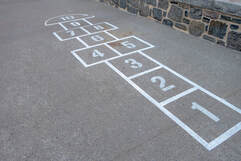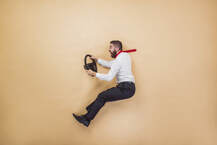|
How can I tell if my student or child has a visually related learning problem? This is useful whether you are a parent or school teacher. |
|
|
|
Over 80 years ago, Dr. William Langcaster found the best students at Dartmouth College in New Hampshire had the worst visual acuities. It is a mystery why this antiquated screening has continued. The screening only checks 3% of your child's vision and screens nothing related to learning(the original intention of school vision screening). See our section on lens therapy to see our solution to the eyestrain created in the classroom. |
|
Since you can not rely on the antiquated school eyesight screening, below are three categories of signs and symptoms you can rely on to determine if a visually related learning problem may exist found in our office brochure How can I tell if my child has a visually related learning problem?
: |
|

1. Appearance of eye
1. Headaches in forehead or temples
1. Headaches in forehead or temples

2. Burning or itchy eyes after reading or desk work

3. Print blurs soon as reading

4. Complains of seeing double

5. Words move or swim on page
2. Complaints at desk work (The first five are same as all in Appearance of the eyes above.)
1. Headaches in forehead or temples
2.Burning or itchy eyes after reading or desk work
3.Print blurs soon as reading
4. Complains of seeing double
5. Words move or swim on page
1. Headaches in forehead or temples
2.Burning or itchy eyes after reading or desk work
3.Print blurs soon as reading
4. Complains of seeing double
5. Words move or swim on page
|
6. One eye turns in or out at any time. |
|

7. Reddened eyes or lids

8.Eyes tear excessively

9.Encrusted eyelids

10.Frequent styes on lids.

3. Behavioral signs of visual problems
A. Eye movement abilities - ocular motility)
1. Head turns in reading / paperwork
A. Eye movement abilities - ocular motility)
1. Head turns in reading / paperwork

2. Loses place frequently as reads

3. Use finger / marker to keep place

4. Short attention span

5. Frequently omits words

6. Writes up or down hill

7. Rereads or skips lines

8. Miss-orients drawings on a page

B. Eye teaming ability
1. Repeats letters within words
1. Repeats letters within words

2. Omits numbers letters or phrases

3. Miss aligns digits in columns

4. Squints, closes or covers one eye

5. Tilts head at desk or reading

6. Odd posture in desk activities

7. Stubborn behavior

c. Eye-hand coordination abilities
1. Must " feel things" to get the idea
1. Must " feel things" to get the idea

2. Eyes not used to steer hands (lack of orientation, placement of words,or drawings.)

3. Writes crookedly, poorly spaced can't stay on line

4. Miss aligns both horizontal and vertical series of numbers

5. Uses hand as "spacer" to control spacing and page alignment

6. Confuses right-left directions

D. Visual Form Perception
1. Doesn't recognize the same word in the next sentence
1. Doesn't recognize the same word in the next sentence

2. Reverses letters/words writing or copying

3. Hard to recognize minor differences

4. Confuses words with similar beginnings/endings

5. Doesn't visualize what read silently/orally

6. Whispers to reinforce silent reading

7. "Draws" with finger to tell similarities/differences

4 E. Need for eyeglasses
1. Rapidly loses interest in reading
1. Rapidly loses interest in reading

2. Blinks a lot read or desk work

3. Holds book too close or face close to desk

4. Makes errors in copying from board/page to paper

5. Squints to see board/requests to move nearer

6. Rubs eyes during/after short periods of visual activity

7. Blinks to clear board after desk and digital work
For those who wish a paper copy of How can I tell if my child has a visually related learning problem? the PDF's are enclosed below:
| id_vision_learn_problem-front.pdf | |
| File Size: | 189 kb |
| File Type: | |
| id_vision_learn_problem_-_back.pdf | |
| File Size: | 363 kb |
| File Type: | |